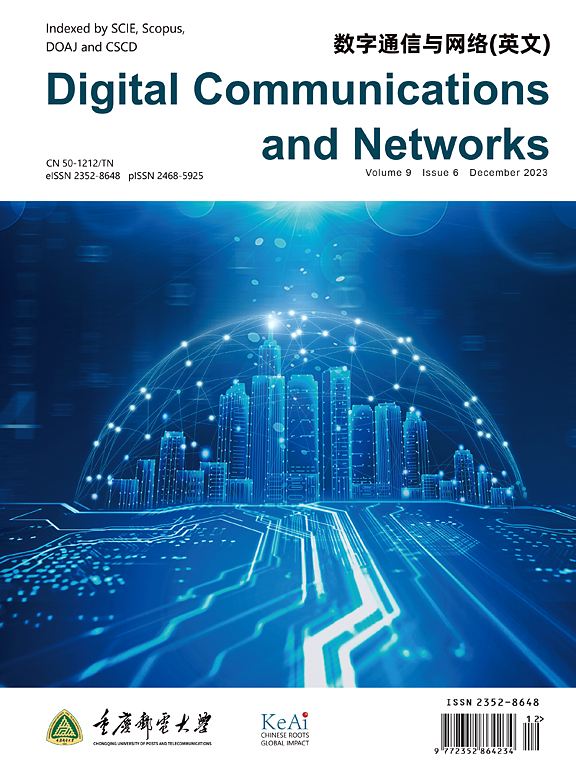基于深度强化学习的可穿戴设备医疗网络频谱资源分配
IF 7.5
2区 计算机科学
Q1 TELECOMMUNICATIONS
引用次数: 0
摘要
随着未来医疗物联网(Web of Healthcare Things, WoHT)的发展,具有海量同时在线通信需求的医疗传感器将呈现密集部署的趋势。海量医疗传感器的密集部署和同时在线通信不可避免地会产生重叠干扰。这对于支持医疗级服务质量水平的数据传输将是极具挑战性的。为了应对这一挑战,本文提出了一种基于深度强化学习(DRL)方法的超图干涉协调辅助资源分配方法。具体来说,我们通过分析重叠干涉的影响,建立了一种新的超图干涉模型。由于直接求解超图干涉模型的复杂性较高,通过马尔可夫决策过程(Markov Decision Process, MDP)建模方法将原资源分配问题转化为序列决策问题。然后,提出了一种基于策略和价值的资源分配算法来解决同时在线通信和密集部署下的资源分配问题。此外,为了增强智能体对最优分配策略的探索能力,提出了一种异步并行架构的资源分配算法。仿真结果验证了所提算法在WoHT场景下比现有算法获得更高的网络吞吐量。本文章由计算机程序翻译,如有差异,请以英文原文为准。
Deep reinforcement learning-based spectrum resource allocation for the web of healthcare things with massive integrating wearable gadgets
With the development of the future Web of Healthcare Things (WoHT), there will be a trend of densely deploying medical sensors with massive simultaneous online communication requirements. The dense deployment and simultaneous online communication of massive medical sensors will inevitably generate overlapping interference. This will be extremely challenging to support data transmission at the medical-grade quality of service level. To handle the challenge, this paper proposes a hypergraph interference coordination-aided resource allocation based on the Deep Reinforcement Learning (DRL) method. Specifically, we build a novel hypergraph interference model for the considered WoHT by analyzing the impact of the overlapping interference. Due to the high complexity of directly solving the hypergraph interference model, the original resource allocation problem is converted into a sequential decision-making problem through the Markov Decision Process (MDP) modeling method. Then, a policy and value-based resource allocation algorithm is proposed to solve this problem under simultaneous online communication and dense deployment. In addition, to enhance the exploration ability of the optimal allocation strategy for the agent, we propose a resource allocation algorithm with an asynchronous parallel architecture. Simulation results verify that the proposed algorithms can achieve higher network throughput than the existing algorithms in the considered WoHT scenario.
求助全文
通过发布文献求助,成功后即可免费获取论文全文。
去求助
来源期刊

Digital Communications and Networks
Computer Science-Hardware and Architecture
CiteScore
12.80
自引率
5.10%
发文量
915
审稿时长
30 weeks
期刊介绍:
Digital Communications and Networks is a prestigious journal that emphasizes on communication systems and networks. We publish only top-notch original articles and authoritative reviews, which undergo rigorous peer-review. We are proud to announce that all our articles are fully Open Access and can be accessed on ScienceDirect. Our journal is recognized and indexed by eminent databases such as the Science Citation Index Expanded (SCIE) and Scopus.
In addition to regular articles, we may also consider exceptional conference papers that have been significantly expanded. Furthermore, we periodically release special issues that focus on specific aspects of the field.
In conclusion, Digital Communications and Networks is a leading journal that guarantees exceptional quality and accessibility for researchers and scholars in the field of communication systems and networks.
 求助内容:
求助内容: 应助结果提醒方式:
应助结果提醒方式:


